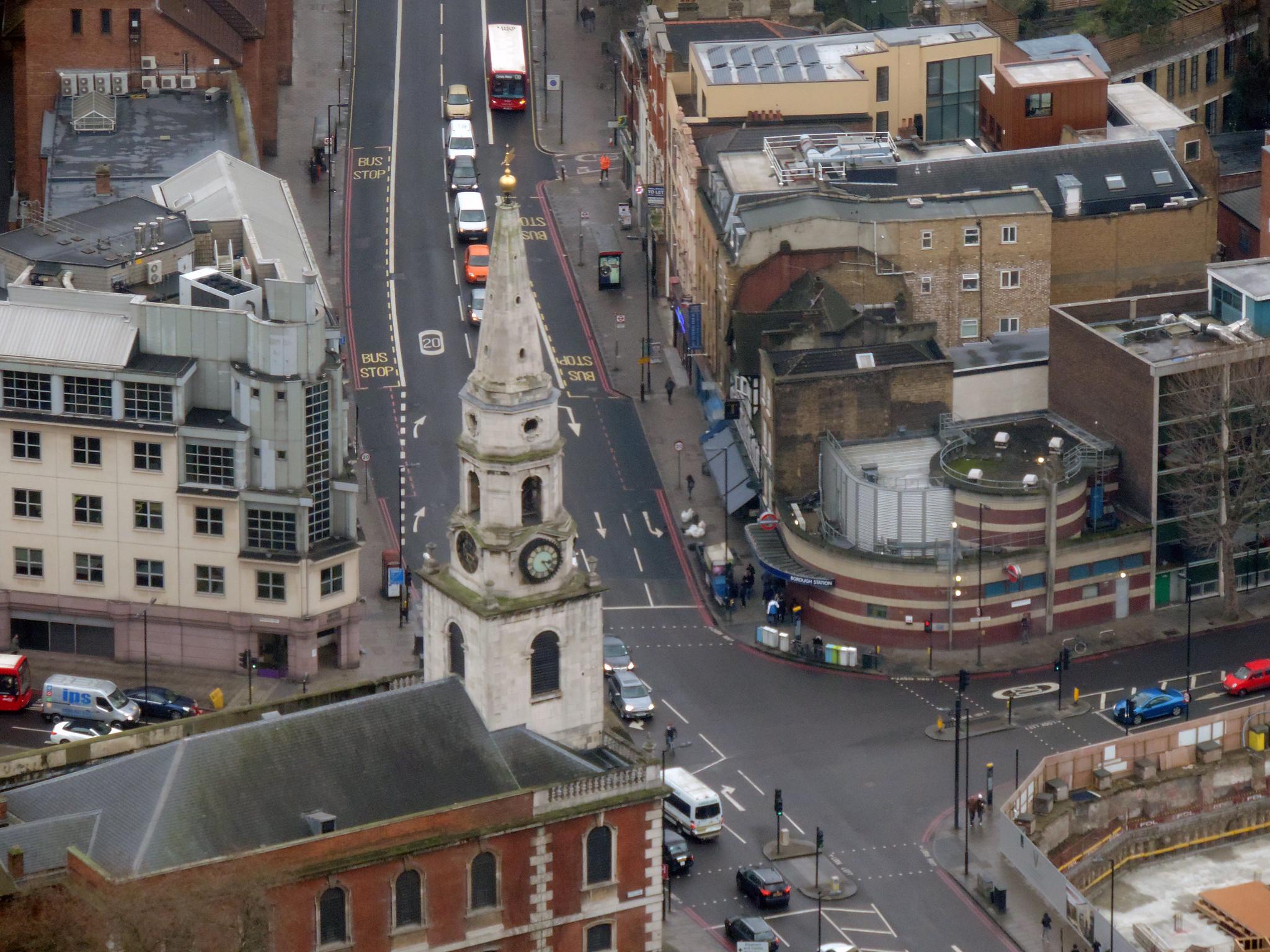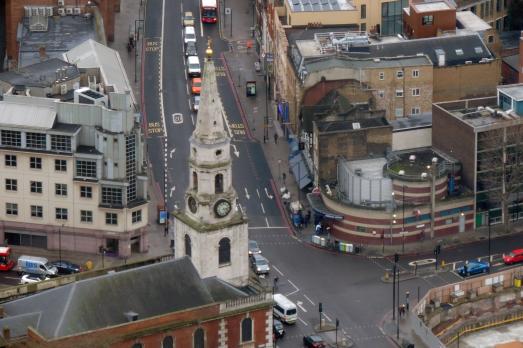The current church is of 18th century origin and was opened on St George’s Day, 1736. The first record of a church on the site goes back to 1122 and the church’s dedication to St George is one of the oldest in England.
The medieval church was very different in design from today, and had a three storied square tower which can be seen in Wyngaerde’s 1543 panorama of the city. It also had royal connections, with Richard II pardoning a murderer here in the late 14th century. Henry V also met the dignitaries of London on the steps of St George the Martyr on his return from victory at the Battle of Agincourt in 1415.
St George’s has always been at the heart of a vibrant, urban community. The annual Southwark fair took place from St George’s to the modern Southwark Cathedral up Borough High Street from the medieval period until 1763. The church can be seen in Hogarth’s 1733 print of Southwark Fair. Similarly, a guild was present at St George the Martyr up until the 1560s. This guild was dedicated to St George and the Virgin, and was a popular expression of community belief at the time.
The church you walk into today is mainly of 18th and 19th century design. The pews date from 1808, and were all originally as high as the current back row of pews. The pulpit is one of the tallest in London, and dates from the 18th century. It used to be three tiered, with a clerk’s desk and reading desk beneath it. The ceiling was designed by Basil Champneys and was installed in 1897. The church suffered terribly in the Second World War during the Blitz, and sustained a huge amount of bomb damage. This led to a major restoration which lasted until 1952. The colourful East Window, designed by Marion Grant, dates from this period as the original window was destroyed by bombing in 1942.
Today, St George’s is open daily for peaceful prayer and worship but also acting as a central hub for groups in the community.



